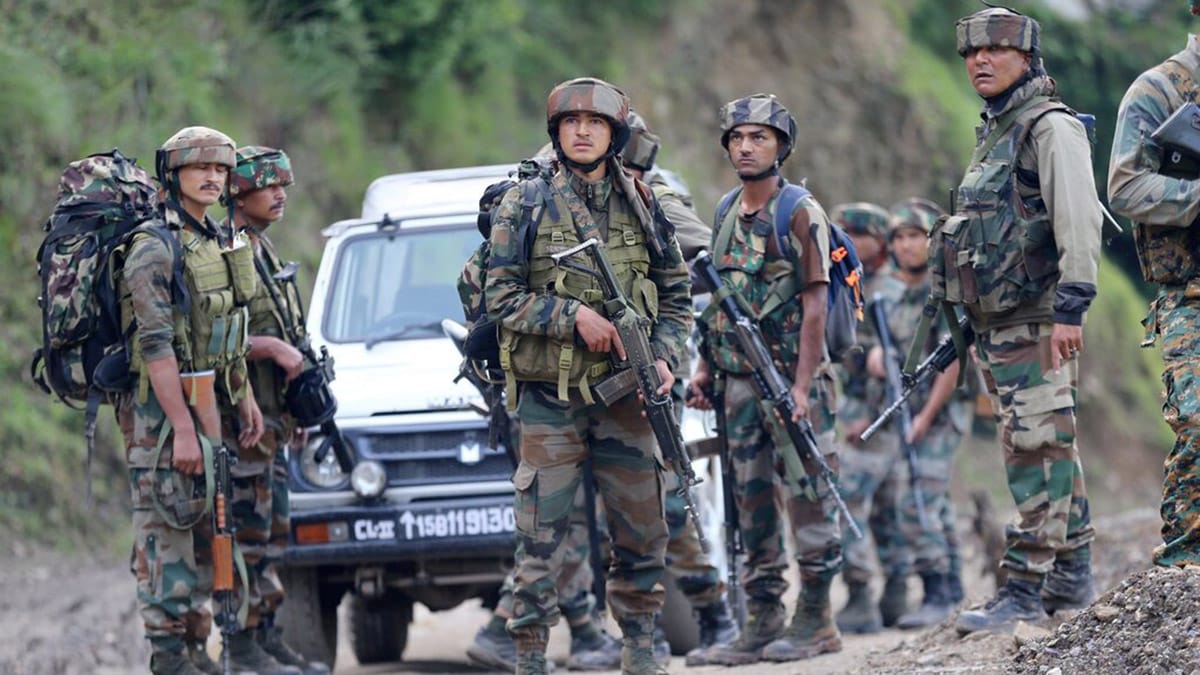It’s never easy understanding the dying embers of terror, separatism or a largely neutralised proxy war. One loves to imagine that it’s all finally over; victory is on the cards; in fact, it’s already there. And then something small happens, a minor setback that refuses to become bigger; remaining small adds to its nuisance value.
The moment it becomes bigger, it’s easy to swat it away physically. This is not a model very far from that which has emerged in the last 18 months or so in the Jammu region and is seen to be perpetuating itself in the Kathua sub-region in recent weeks. This is a typical challenge of conflict termination in a hybrid scenario which most security forces around the world do not study professionally.

The Israeli Defence Forces are stuck in a morass of this kind, trying to remove the dying embers in Gaza, and they keep flaring back. In such situations, small actions are always considered big. This is not easily understood or discussed, and hence it needs analysis, especially in the context of Kathua.
What has Pakistan been attempting to do in the Jammu region, especially the sub-region of Kathua? The intent, doctrine and strategy being followed need identification. Keeping the Indian Security Forces (SF) stretched and distracted is the basic intent. Too much money, time and blood have been invested in the Jammu and Kashmir proxy war by Pakistan to allow this to languish and see India gain full internal stability, allowing progressive normalcy and growth under the current government in Delhi.
With the thinning of Army presence in parts of the Jammu sector (especially after redeployment to Ladakh), Pakistan had spotted a vacuum in 2023. Its intent was to upset the force allocation and deployment of resources, particularly troops and attention, away from strategic sectors like Ladakh and Kashmir. Gaining propaganda value and disrupting the rising morale after the abrogation of Article 370 was important for Pakistan.
For that it did not need thousands of terrorists. A handful of well-trained terrorists led by a few competent regulars was sufficient to gain tactical and psychological effect. Regular attacks in Jammu, a region largely pacified and peaceful, tended to cock a snook at India.
In Kashmir it’s never easy for terrorists to go beyond the one-off success because of the density of troops. Hence, Jammu became the region of focus. All this was not just to disillusion India’s audience but also to bolster morale among disillusioned separatist elements and sleeper cells.
By continuing to activate the southern front, Pakistan aims to stretch the Indian counterterror grid, forcing it to cover more ground across difficult terrain. India did well even after some initial setbacks in the Jammu region. Redeployment was smoothly executed, as was the strengthening of the grid.
The dangerous areas of Surankote, Rajouri and Kalakote were retrieved back to near normalcy and full stability, but for now the focus shifted to Kathua. The question is, why Kathua? Kathua has been chosen very deliberately by Pakistan-backed proxy elements, and the reasons reflect a blend of geography, security asymmetries, and strategic signalling. Kathua sits at the trijunction of Jammu and Kashmir (J&K), Punjab, and Himachal Pradesh.
The terrain includes forests, riverine gaps, and deep nullahs, making it ideal for infiltration and concealment. Unlike the high-altitude zones in Rajouri or Kashmir, Kathua’s undulating terrain is less hostile for movement and logistics. The IB (International Border) in the Kathua sector is fenced, but fencing is not impenetrable—rivers and nullahs often create gaps or make repair difficult, especially post-monsoon.
Unlike the LoC areas where the Army mans the front, the IB counter-infiltration grid is much thinner, particularly in terms of response time and layered surveillance. Terrorists may infiltrate via Punjab (Gurdaspur-Pathankot belt) and enter Kathua, exploiting the interstate border grey zone. Kathua has large rural belts and relatively sparse settlement clusters, unlike the tighter habitation patterns in or around Jammu.
This delays detection and gives infiltrators time to establish temporary safehouses or stage attacks. The Rashtriya Rifles footprint in Kathua is virtually non-existent compared to Poonch, Rajouri, or Kupwara, making Army deployment sparse and reliant on rapid mobilisation. Pakistan’s military assessment would have revealed that the proficiency of the Indian Army, the J&K Police and the CRPF is centred west and north of Jammu, where militancy and terror abounded, in the Northern Command area of responsibility.
Traditionally it has been much less to the south and east, which is anyway under the Army’s Western Command, a premier force much more oriented towards conventional operations. Pakistan may have perceived Kathua as an ideal opportunity to keep the slow fire burning to create relevance for Pakistan in the Indian security matrix, without triggering massive retaliation. Negative events in and around Kathua disrupt the national highway (NH-44) and logistics arteries towards J&K and Ladakh.
They serve to create noise far from the centre of gravity, which in Pakistan’s perception always revolves around Kashmir’s territory and its people. It confuses media narratives and divides operational attention. A small, symbolic success in Kathua creates the illusion of a wider insurgency, something Pakistan wants to project without deploying too many resources.
Kathua has one more distinct strategic advantage for the other side: its proximity to Punjab. Pakistan may be perceiving that keeping such an area active allows it the scope to later proliferate towards J&K or Punjab, and in the extreme contingency, both states. So, what must India do besides the routine military search and destroy operations? The situation demands a more precision-based doctrinal approach.
A single commander from the Army must be appointed, and a revamped, localised Unified Command comprising officials of both Punjab and J&K needs to emerge early. GOC 9 Corps, with a tactical headquarters at Pathankot, should be the natural choice for this, and his hands must be strengthened. Operations cannot be centred on a ‘kills’ pattern; body count is irrelevant when a handful are involved.
An innovative method of empowerment of locals and a very energetic outreach through a contact programme will enhance awareness. A welfare-oriented all-of-government programme which dovetails responsibility of the locals too is a must. Operation Sadbhavna must not be repeated in its old mould; it needs a full review but is a solid model to base our response upon.
There is a last reason for recommending the employment of the Army against a handful of terrorists which ordinarily would be assessed as within the capability of local police forces. This is the Army’s launch pad too, and it’s also the crucial area where the logistics lifelines to J&K flow. Military security is therefore crucial.
Keeping this secure may be anyone’s responsibility, but the Army has to keep a watch on the area and have full control over it. The latter in the modern world means control over potentially disruptive networks too. We have done splendidly in Kashmir and parts of Jammu; there’s no reason why we cannot repeat full success in Kathua.
The writer is a Member of the National Disaster Management Authority. Views expressed in the above piece are personal and solely those of the author. They do not necessarily reflect Firstpost’s views.
.
Politics

Why Kathua is becoming terror centre of J&K

After India’s success in countering terrorism in the Kashmir Valley, Kathua is being focused deliberately by Pakistan-backed proxy elements because of a blend of geography, security asymmetries, and strategic signalling















